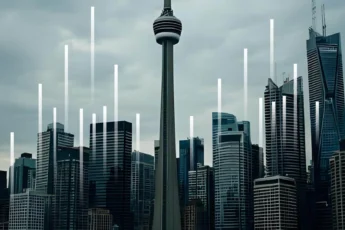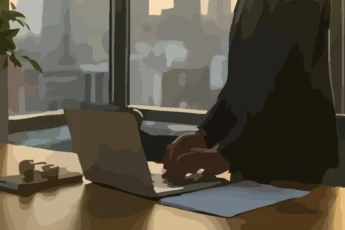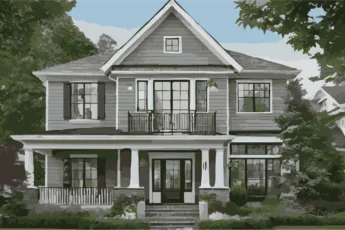Vacancies are more than a line item on a spreadsheet: they generate a creeping sense of loss and leave owners wondering what they could have done differently, such as how to effectively stage a rental property for potential tenants.
Prospective tenants, on the other hand, rely almost entirely on emotion when deciding whether to apply. University studies on first-impression bias show that the human brain forms a lasting judgment in just seven seconds—long before square-footage figures or appliance specs have a chance to register.
Knowing this, the most cost-effective staging strategy is the one that guides feelings first and logic second.
Below you’ll find a psychology-driven, budget-conscious roadmap on how to stage a rental property in Toronto so it leases quickly and at healthy terms.
Begin with a Clear Emotional Goal
Before buying so much as a pillow for staging, define the single emotion you want to provoke the instant a prospect crosses the threshold. In Toronto’s competitive market the winning combination is usually calm blended with possibility: the sense that life will feel easier and perhaps even a little aspirational in this space. Write that feeling down—literally—so every decision can be tested against it.
Master the First Seven Seconds
Humans overweight initial information, so the entry sequence carries disproportionate weight. Start with scent: a subtle citrus diffuser in summer or a hint of vanilla in winter telegraphs freshness and comfort. Match that cue with bright, daylight-balanced LED lighting in the foyer. Finally, offer a micro-moment of control by placing a small bench or console table near the door; when visitors set their keys down they unconsciously begin to imagine ownership.
All three touches cost less than sixty dollars yet shape every perception that follows.
Use Colour Psychology with Restraint
Full repaints between tenants aren’t feasible, but strategic colour cues still work when you stage a rental property. Choose one wall—often the one opposite the largest window—and paint it a light, warm neutral that reflects daylight deeper into the unit. Then introduce small “trust colours” in accessories: navy cushions on the sofa or an emerald planter by the window. Both shades rank high in studies measuring associations with stability and reliability. Because the accents are portable you can reuse them in other vacancies, keeping total outlay low.
Tell a Lifestyle Story in Vignettes
People don’t buy square footage; they buy identity markers. Curate two or three extremely simple scenes that whisper the lifestyle your ideal tenant wants. A French press on a wooden tray implies slow Saturday mornings, a framed TTC map or a Drake lyric nods to local culture, and a folding bistro chair with a small herb planter on the balcony turns even modest outdoor space into an urban oasis. The props are inexpensive, but they convert abstract floor plans into lived-in daydreams.
Invoke Scarcity—Gently
Vacancies can feel endless to an owner, yet you want prospects to sense that opportunities are limited in a staged rental property. Trim the published showing window by one day so urgency rises, and place just two application forms—neatly stacked—on the kitchen counter. The subconscious conclusion is that other people are already competing, prompting decisive action without any heavy-handed sales tactics.
Lower Cognitive Load
Over-stimulated visitors become mentally fatigued and default to “we’ll keep looking.” To keep their brains fresh, remove half of all small décor items and label storage areas with minimalist adhesive tags: Pantry, Linen, Cleaning. Immediate visual order cues the imagination to populate shelves with the prospect’s own belongings instead of puzzling over where things might fit.
Make Every Square Foot Feel Larger
In Toronto’s micro-units, perceived space equals perceived value. Place a frameless mirror opposite the brightest window to double visual depth. Introduce a tall plant or floor lamp so the eye travels upward, implying higher ceilings. And resist the urge to shove furniture against the wall; floating a sofa just a few inches forward signals that there is room to spare.
Spend Where Emotion Matters Most
Certain low-ticket upgrades punch far above their weight: matte-black cabinet pulls deliver an instant “designer” vibe, a hotel-crisp shower curtain screams cleanliness, an LED strip under upper cabinets bathes counters in warm light, and a live pothos plant quite literally breathes vitality into the space. None of these changes strain the budget, but collectively they raise the perceived finish level.
A 24-Hour Staging Sprint
If time is tight, follow this condensed schedule to stage a rental property efficiently.
- First, perform a ruthless declutter, stashing loose items in single clear bins and sliding them into closets.
- Second, deep-clean high-touch zones—door handles, light switches, faucet bases—because disgust triggers are instant deal-killers.
- Third, layer lighting: overhead for brightness, task lamps for function, and one accent source for warmth.
- Fourth, refresh the air by opening windows for fifteen minutes, then start the diffuser on its lowest setting.
- Fifth, set the thermostat to 21 °C; physical comfort primes positive mood.
- Finally, cue a soft lo-fi playlist at barely-audible volume; research shows gentle background music lengthens on-site dwell time.
Measure What Matters
Track two metrics: days on market and rent-to-ask ratio before and after implementing these tactics to effectively stage a rental property.
The Take-Away
Staging is not about stuffing rooms with furniture; it is about curating emotions. By guiding first impressions, simplifying choices, and reinforcing a quietly aspirational lifestyle—all while spending with surgical precision—you transform an empty unit into an irresistible invitation. If you would rather invest your weekend elsewhere, book a free fifteen-minute consultation with our realty team. We’ll look after every staging step for you so your unit rents faster and your weekends stay yours.



